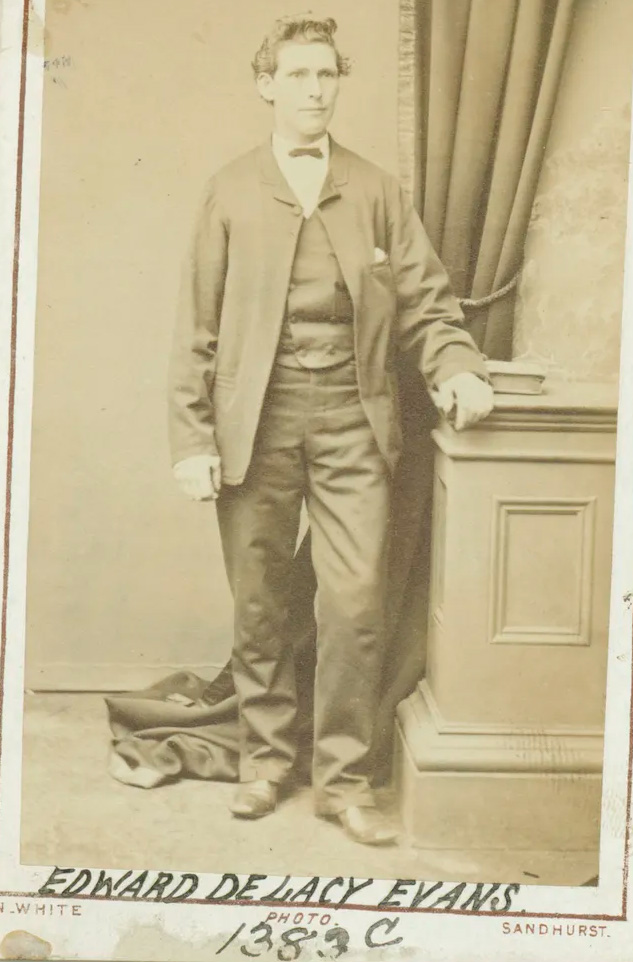Anti-transgender hatred is on the rise. Driven by pseudoscience and backed by well-funded far-right pressure groups, part of the premise of the anti-trans “gender critical” movement is that trans people are new and unnatural. History shows us this is not the case.
The “trans” prefix emerged in 1910 with Magnus Hirschfeld’s research on “transvestism” (initially a medical term). Hirschfeld was a gay German Jewish doctor whose research centre, the Institut für Sexualwissenschaft, has been called the world’s first trans clinic. The institute was destroyed by Nazis in 1933. You might be familiar with this image of Nazi book-burning – the books in question were Hirschfeld’s research.
Note: This article contains references to anti-trans, colonial and institutional violence, and includes information about an Aboriginal person who died in the early 20th century.

A uniformed member of the Nazi SA and a student of the Academy of Physical Exercise examine materials plundered from the library of Dr. Magnus Hirschfeld, director of the Institute for Sexual Science in Berlin on May 6, 1933. Wikimedia
In the 1800s, people who crossed gender categories were not understood to be “transvestites” or transgender, but were referred to as “masqueraders”, “impersonators”, “men-women” and “freaks”. As such, I consider my research to be a work of shared queer and trans history, but not necessarily a history of trans people. I am not interested in how people in the past might have identified today, but in how they lived and how their communities responded to them.
Gender variance in First Nations communities
Far from being new, gender variance on this continent predates Europeans’ arrival in Australia.
Several Aboriginal nations have traditions of culturally specific gender categories. In 2015 the organisation Sisters and Brothers NT noted the terms “Kwarte Kwarte” in Arrernte, “Kungka Kungka” in Pitjantjatjara and Luritja, “Yimpininni” in Tiwi, and “Karnta Pia” in Warlpiri, which can be interpreted as “like a girl”, while “Kungka Wati” in Pintipi and “Girriji Kati” in Waramungu literally mean “woman/man”.
Sandy O’Sullivan, a Wiradjuri trans scholar and professor, notes that the imposition of European gender norms on First Nations peoples was part of a broader colonial project that sought to eliminate Indigenous cultures and kinship systems.
Gender transgression in colonial Australia
In colonial Australia, gender transgression was structurally managed via carceral systems such as lunatic asylums, police and prisons.
Although there was no formal legislation against cross-dressing or gender-crossing, people were often charged with vagrancy, fraud, sodomy, impersonation or indecent behaviour. A lot of Australian legislation was inherited from or influenced by British legislation, including the 1533 Buggery Act and the 1885 Criminal Law Amendment Act, also known as “An Act to make further provision for the Protection of Women and Girls”, which strengthened existing legislation against homosexuality and sex work.
In the 19th century there was no formal or medical process for gender transition. When people crossed gender categories, they did so socially, sometimes for their entire lifetimes.
On a local level, gender crossers were frequently accepted in their communities if they met certain conditions. People were more likely to be accepted if they were white, transmasculine, and contributing to the productive workforce. People who were socially marginalised or lacking in support from family and friends were more likely to have hostile interactions with the law and with medicine.
Madness, medicalisation, and criminalisation
Gender transgression over years or decades was often interpreted as evidence of insanity. There were cases such as Tom Hurly, institutionalised in Parramatta Lunatic Asylum in 1861, and Edward de Lacy Evans, institutionalised in Bendigo Hospital and Kew Asylum in 1879. Edward Moate – referred to in the press as “another De Lacy Evans” – was institutionalised in Beechworth Asylum in 1884.
The lunatic asylum was a structure that maintained and restored the colonial order. To be discharged and re-enter the community, patients had to demonstrate that their insanity had been “cured”, which for gender transgressors generally meant being forced to detransition.
Edward de Lacy Evans was made to return to dressing as a woman and was discharged only a few months after his admission. Edward Moate, on the other hand, refused to provide a female name or reassume a female gender expression, and died in the asylum three years later, still under the name Edward Moate.

Portrait of Edward De Lacy Evans (1870) State Library Victoria
Vagrancy charges were the most common way of criminalising gender crossing. This was frequently applied to people who lived as women, who were more likely to be seen as dangerously deviant than tolerably eccentric. In 1863, Ellen Maguire was charged with vagrancy in Melbourne for “personating a woman”. Officially, the vagrancy charge was one of “having no visible means of support”, despite most of the court trial focusing on her employment as a sex worker and her supposed deception of her male clients. She was eventually convicted of sodomy and died in prison after six years.
Sometimes the twin modes of medicalisation and criminalisation were applied simultaneously. In 1896, the Warengesda Aborigines’ Mission reported an Aboriginal (probably Wiradjuri) youth named H Paroo for “masquerading in the garb of a man”.
Paroo was ordered to leave the station, but refused to comply. The station wrote a letter to the Aborigines’ Protection Board asking if Paroo could be removed, either by being “given in charge as a vagrant” or “as not fit to be at large” (that is, as a “wandering lunatic”).
Full and authentic lives
Not everyone who was exposed in the press was vilified or incarcerated as a result. Some people lived full lives in their chosen gender categories, and were only outed after their deaths.
In 1893, a farmer named Jack Jorgensen died in Elmore, near Bendigo, and was promptly exposed in the press as yet “another De Lacy Evans”. Jorgensen had suffered an injury at work but refused to go to Bendigo Hospital. He signed his will as Johann Martin Jorgensen, and died at home under the care of his housemates, who knew about his gender but kept the secret until after his death.
These stories are important because they show that the criminalisation and pathologisation of gender transgression is not a new phenomenon. Medicine and the justice system have a long history of being weaponised against trans people and anyone trespassing from the gendered status quo.
If we are to work towards trans liberation in the present, we must reckon with these histories and address their structural legacies.












